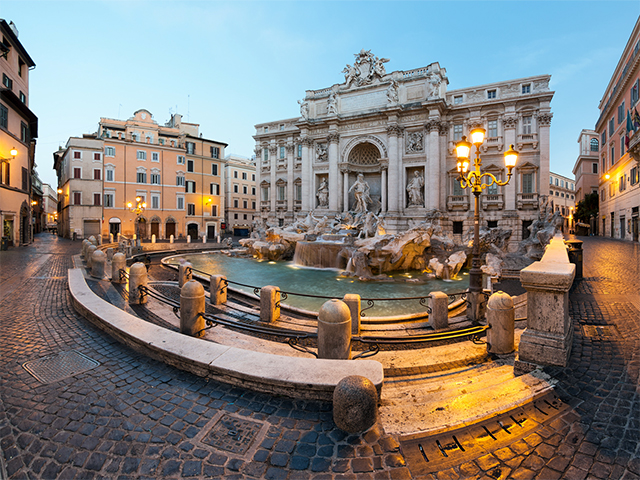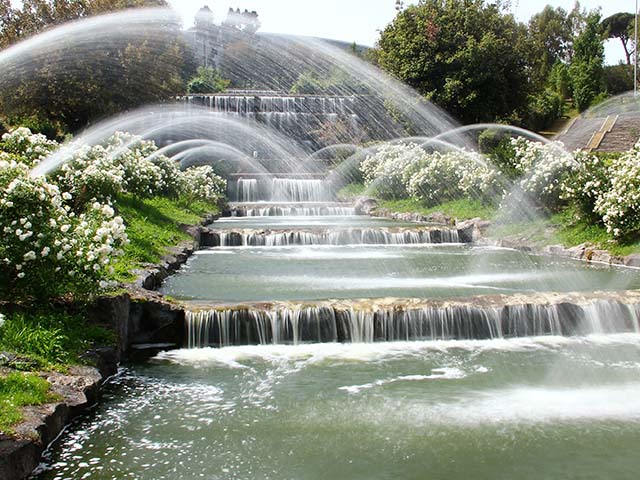10 Things To See on the Palatine Hill: the complete guide to the archeological site
Find out about what to see on the Palatine Hill, Rome's oldest hill. A top 10 list of things not to miss...Together with the Imperial Fora and the Colosseum, the Palatine Hill is one of the most visited places in Italy.
BOOK THE GUIDED TOUR TO THE PALATINE, IMPERIAL FORES AND COLOSSEUM
On the Palatine Hill, located between the Roman Forum and the Circus Maximus, there is a very fascinating view of Imperial Rome and much more...
It is also possible to find remains of Rome's earliest settlements, dating back to the 10th century, precisely to the Iron Age, and even to the time before its foundation.
A stop not to be missed!
Here are 10 things to see on the Palatine Hill, but first let's take a look at its incredible history.

A stunning view of the Palatine
The history of the Palatine Hill
The Palatine Hill represents the beginnings of the Eternal City. In fact, here began the history of Rome when Romulus (or whoever he was), chose this hill to found the city.
Between the 2nd and the 1st century BC, it was the place of important city cults. Only in Rome did this extraordinary communal space exist, where all citizens, regardless of wealth or class, came together to eat or celebrate divinity.
It later became a residential area of the Roman aristocracy, with elegant houses characterised by impressive pictorial decoration on both walls and floors. The House of the Griffins is an excellent example of this kind of houses.
Emperor Augustus symbolically chose the hill as the site of his residence: there were several buildings, as the House of Livia.
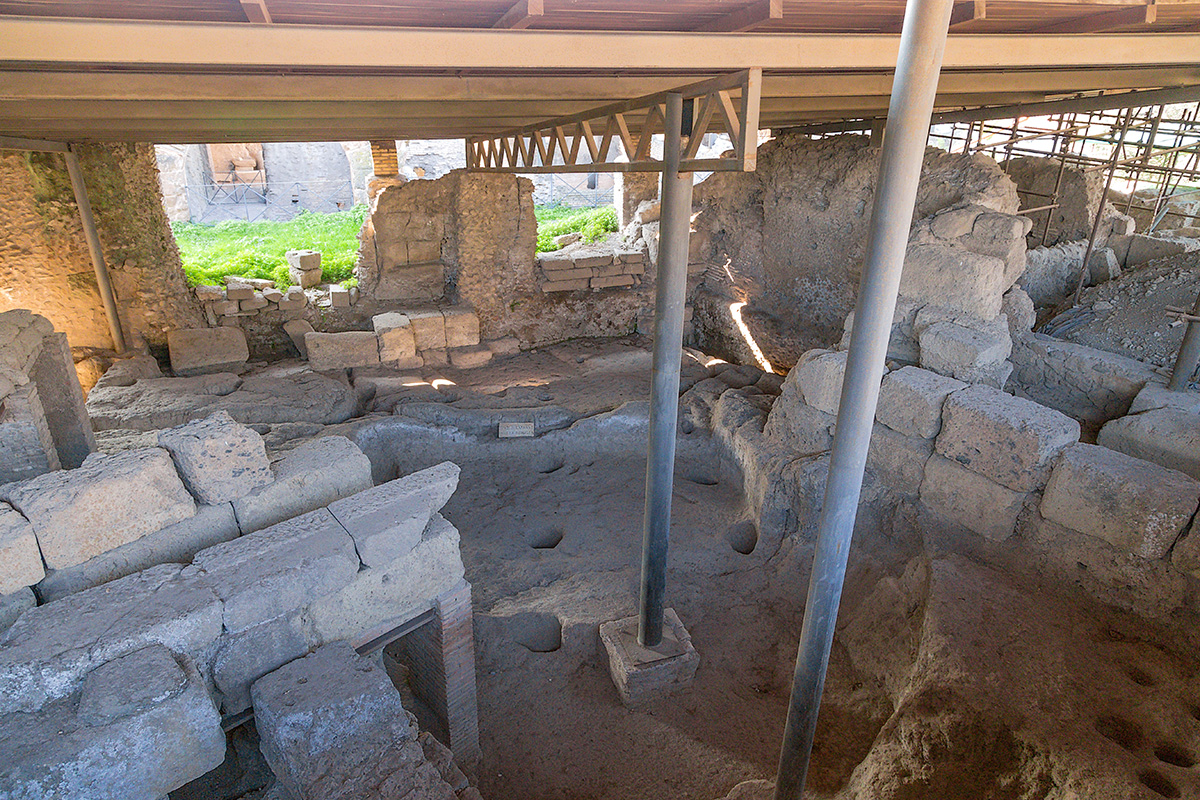
The house of Romulus on the Palatine Hill
1. The Lupercal
At the top of the list of the 10 things to see on the Palatine Hill is the Lupercal. Located at the foot of the hill, it is a cave that became a sanctuary dedicated - as its name indicates - to the god Lupercus.
2. The Temple of Apollo Palatinus
Among the places of cult on the Palatine Hill, you should not miss the Temple of Apollo Palatinus, built by the emperor Octavian after his victory in the battle of Nauloco against Sextus Pompey in 36 BC.
The temple consisted of a pronaos with six columns on the façade. Remains of the marble floor and fragments of the columns with Corinthian capitals can still be seen today.

The Temple of Apollo Palatinus
3. The Temple of Magna Mater
Continuing the visit, you will find the Temple of Cybele, also known as the Temple of Magna Mater. As this goddess came from Troad (the mythical birthplace of the Romans) it was possible to dedicate the temple to a foreign divinity. The temple is located between the House of Romulus and the Domus Tiberiana, near the House of Augustus.
4. The Elagabalium
In the surrounding area there are several buildings of some architectural interest, such as the Elagabalium. This was a temple built by the Roman emperor Elagabalus, located on the north-east corner of the Palatine Hill. The emperor dedicated the temple to the deity Sol Invictus.
5. The House of the Griffins
You can’t miss the wonderful House of the Griffins, an ancient Roman house located in the northern part of Domitian's Palace. Its rooms are adorned with frescoes, mosaics and stucco decorations. One of these, depicting two griffins, gives the building its name.
It is certainly the best-preserved example of a Roman Republic villa. You can still admire the magnificent paintings, made between the end of the 2nd century and the beginning of the 1st century BC.

A beautiful decoration on the House of the Griffins
6. The Domus (Roman Imperial houses)
The Palatine Hill is home to some very important and luxurious imperial palaces. Augustus, Tiberius and Nero, among others, lived here. Among the most important palaces, we mention:
- the Domus Augustea (The House of Augustus): located on the southwest slope of the Palatine Hill, it has been identified as the primary place of residence for the emperor Augustus. Augustus’ choice to live in this area (also because he was born here) would condition the history of the hill. The following emperors, in fact, also chose this area as a place of residence, so it became an immense complex of imperial buildings.
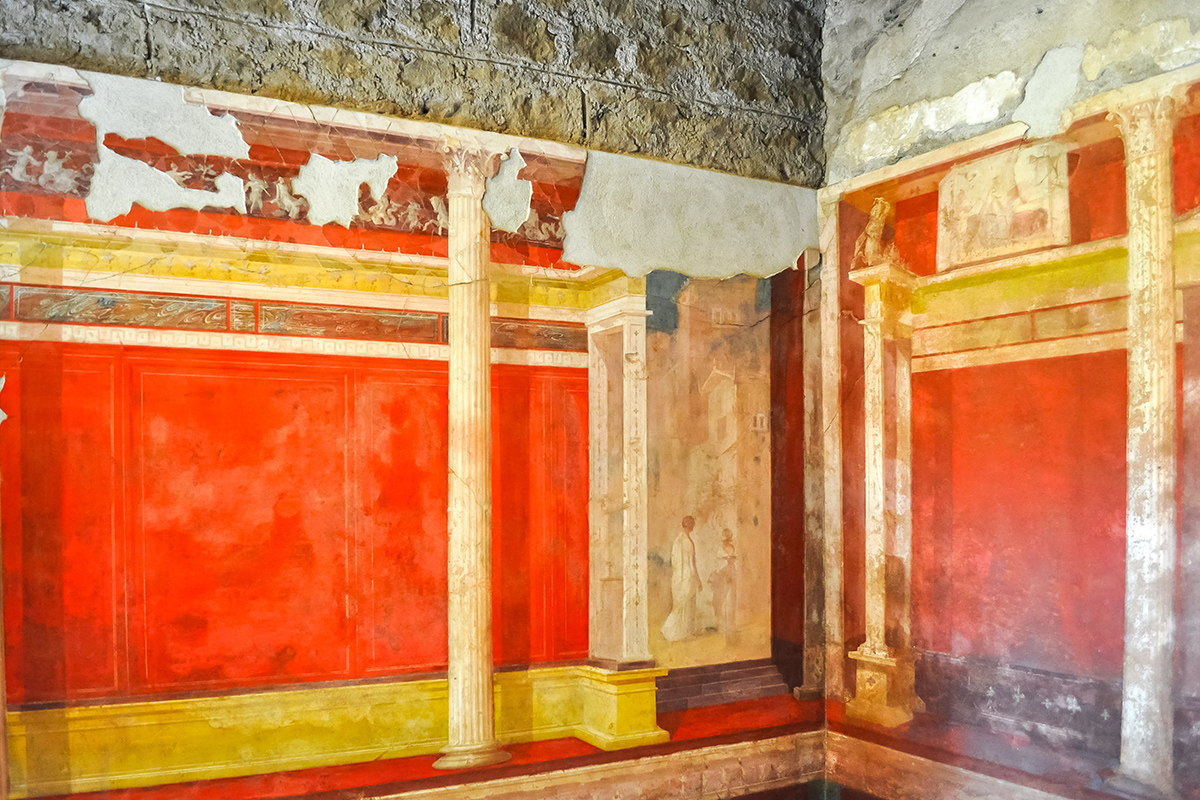
Domus Augustea - La Casa dell'Imperatore Augusto
- the Domus Tiberiana: this was the first imperial palace on the Palatine Hill built by the Emperor Tiberius. It is located on the western slope of the hill, between the Temple of the Magna Mater and the Roman Forum.
- the Domus Transitoria: this was Nero's first residence on the Palatine Hill, but it was destroyed by the Great Fire in 64 AD and then was extended with the construction of the Domus Aurea. The building allowed the "transit" from the imperial possessions on the Palatine hill to those on the Esquiline hill.
- the Domus Aurea (the parts that can be visited today are on the Oppio hill): after the devastating fire of 64 AD that destroyed a large part of the city centre, the emperor Nero began the construction of a new residence, which for its magnificence and refinement is known as the Domus Aurea.
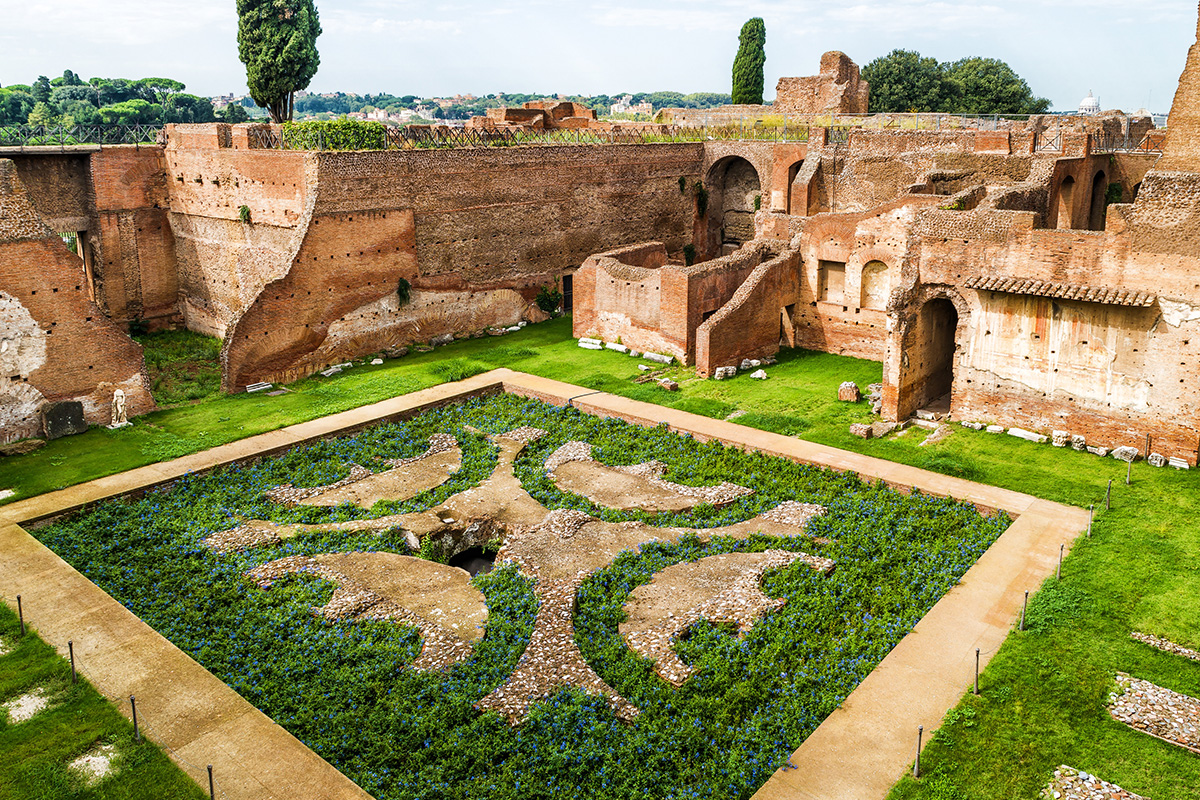
Domus Augustana
- the Domus Flavia: it is divided into a public and a private sector, known as the Domus Augustana. Together with the stadium of Domitian, both Domus are part of the Palace of Domitian, which is the most important complex of imperial buildings on the Palatine Hill.
Thanks to the planimetries, it is possible to see how the different Domus were connected to each other through underground corridors, which were often decorated: the Cryptoportico of Nero is one of the best preserved examples of these corridors. It is possible to see an accurate reconstruction of this cryptoportico in the Palatine Museum.
7. The Palace of Domitian
Another stop you should not miss is the Palace of Domitian. This is the largest complex of buildings on the Palatine Hill. For the first time, a single organised structure brought together all the functions of the political life of the state.
The Palace of Domitian consists of three parts:
- the Domus Flavia (public area)
- the Domus Augustana (private area)
- the stadium of Domitian
The stadium consists of a stage with a semi-circular exedra, surrounded by a corridor and three open areas.
Inside the stadium there were flowerbeds, paths and trees dotted with marble sculptures. Most of the statuary in the nearby Palatine museum comes from this beautiful place.
Throughout the stadium you can admire decorations made with Cipollino marble ("onion-stone" marble) and granite columns. It is also said that the emperor Elagabalus had a mountain of snow transported to this area.
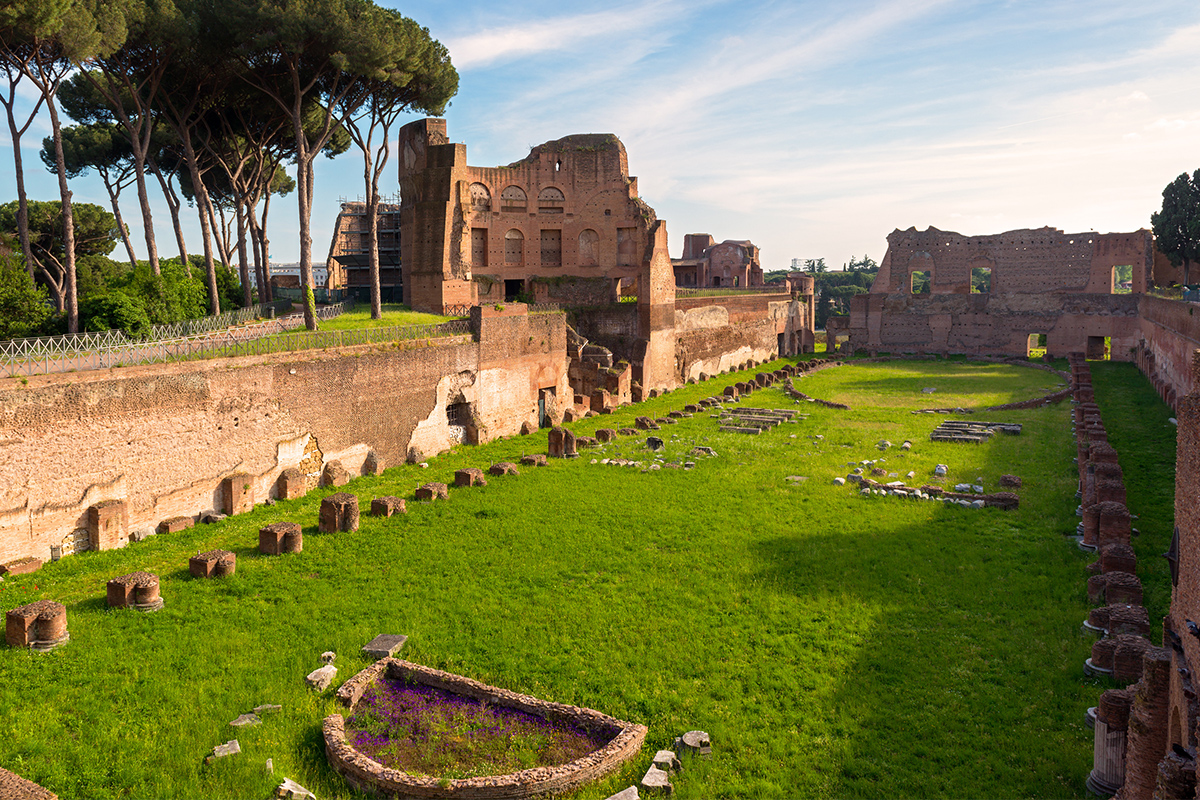
The beautiful stadium of Domitian on the Palatine hill
8. The Palatine Museum
The Palatine Museum is housed in the building of the former convent of the Visitation Nuns, built in 1868 on the remains of the Domitian’s Palace.
In 1882 and later during the Second World War some of the materials found in the excavations were transferred to the Museum of the Baths of Diocletian, but many of them have never been returned to the Palatine museum.
In the 1990s the Palatine Museum was reorganised and, on the occasion of the Augustan bimillenary, multimedia installations were added.
The museum is divided into two floors:
- On the ground floor you can see a reconstructions of the rooms, which preserve the original structure of the pre-existing domus. You can also find all the information about the history of the hill, from the origins of Rome to the foundation of the principality (1st century BC).
- On the first floor you should not miss the room VI, where there are examples from the time of Augustus, the emperor who first modified the function of the Palatine Hill. We also recommend a visit to the room VII, where there are mosaics and precious paintings from Nero's Domus Transitoria.

The Palatine Museum
9. The Arch of Titus and the Arch of Constantine
Both the Arch of Titus and the Arch of Constantine are great examples of honorific arches set up under the Imperial period.
The first one, the Arch of Titus, is located on the northern slope of the Palatine Hill on the eastern side of the Roman Forum. It is a symbolic monument of the Flavian period and a true architectural/artistic masterpiece. The Arch of Titus was constructed in memory of the Jewish-Roman War fought by Titus in Galilee.
The second one, the Arch of Constantine, is the largest Roman triunphal arch and the last of Imperial Rome. It was constructed to commemorate Constantine's victory over Maxentius.
It is not exactly in the Palatine zone, but very close to the Colosseum. It is certainly worth the detour!
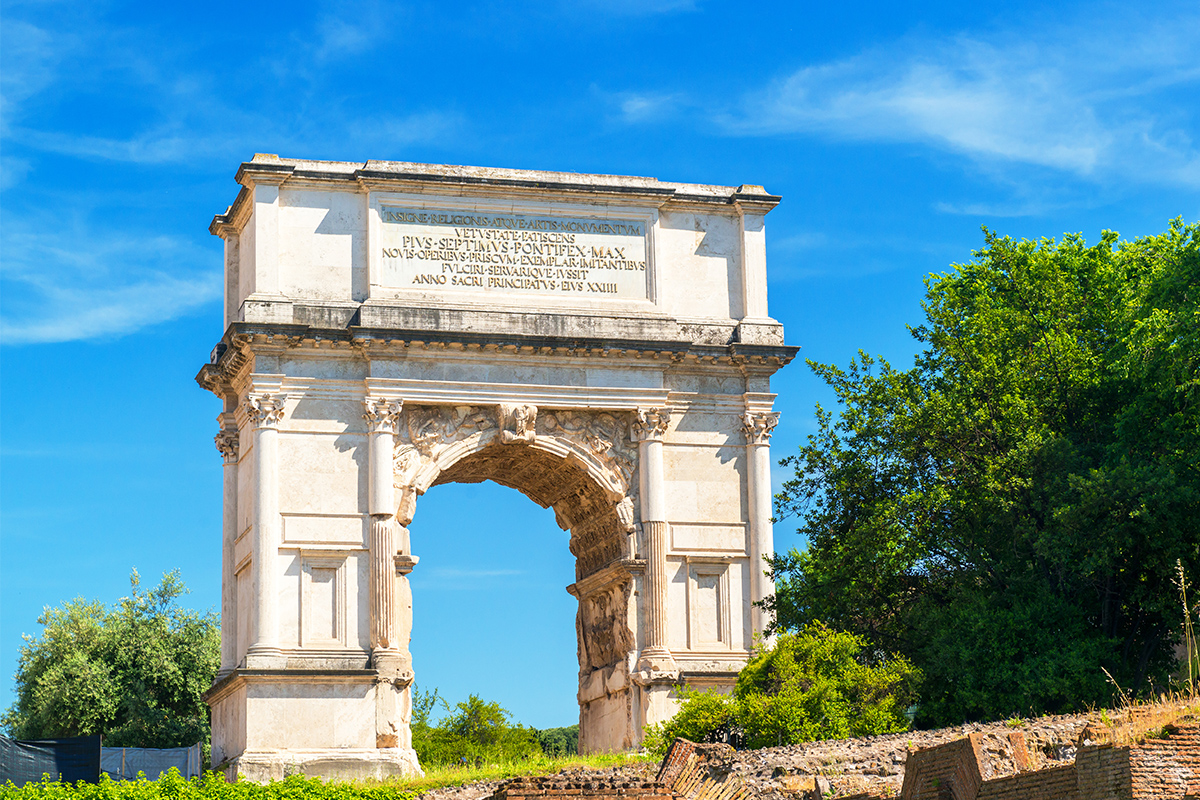
The Arch of Titus, in all its beauty!
10. The Orti Farnesiani
The Orti Farnesiani ("Farnese Gardens") were the "secret garden" of the Palatine Hill. They are arranged in terraces and stairs that extend from the slopes to the top of the hill.
These beautiful 16th century Renaissance buildings were commissioned by Cardinal Alessandro Farnese, who was the grandson of Pope Paul III.
Farnese wanted to "create a place suspended in time between imperial memories and dynastic-family celebrations, a space of leisure, beauty, nature and art, inspired by the ancient Roman horti".
Steps from terrace to terrace run past the Ninfeo della Piogga (a nymphaeum) to end in the Teatro del Fontanone. This is a set of water spouts, basins, monumental staircases and niches located behind the Domus Tiberiana.
Behind the pavilions, divided by a small terrace, there is a splendid garden: it is just a small part of the ancient Farnese gardens.
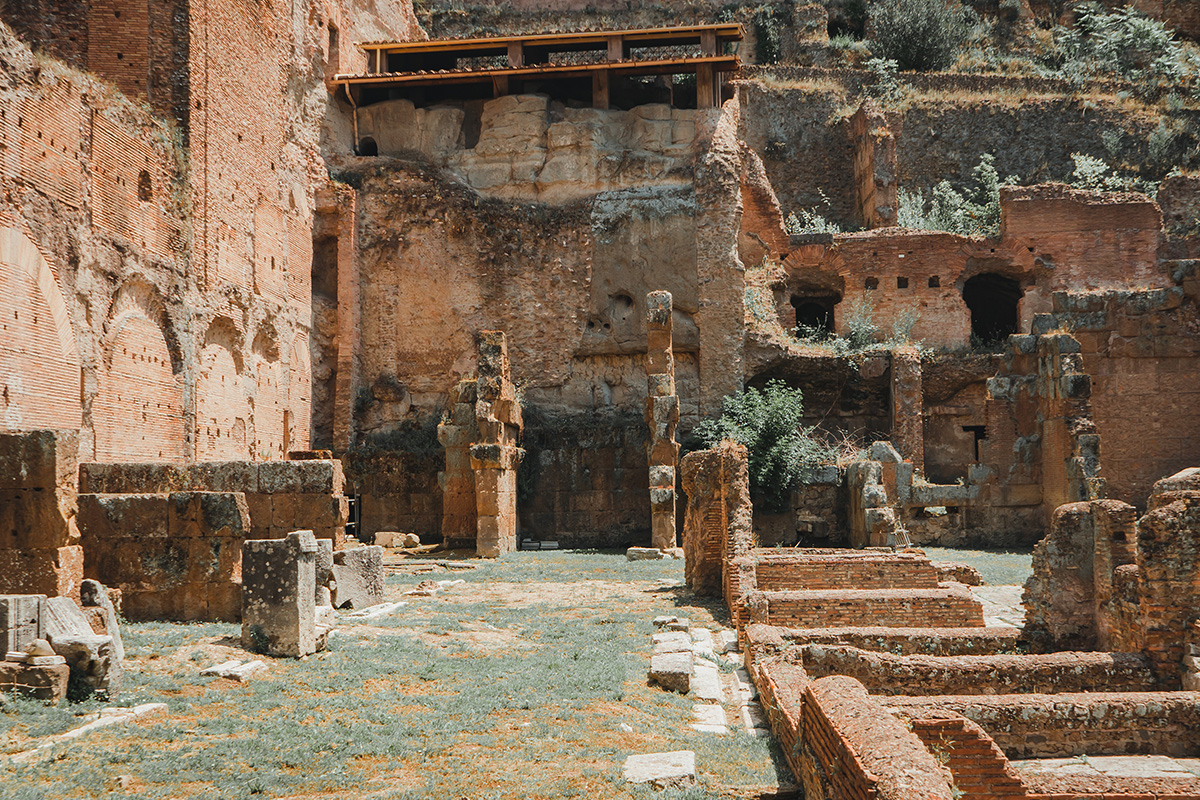
A wonderful view of the Orti Farnesiani
The surrounding area
The Palatine Hill is located in a privileged position, close to important points of interest.
Once you have completed the classic tourist route (the Roman Forum, the Palatine Hill and the Colosseum), in the surrounding area you can find: the Circus Maximus, the Mouth of Truth, the Capitoline Museums and the Vittoriano in Piazza Venezia.
Finally, on the Oppio hill - located on the slope opposite the Palatine Hill - you can find one of the most impressive architectural beauties of Ancient Rome: the Domus Aurea.
Thanks to the work of archaeologists, the Palatine area is constantly evolving: an ancient world waiting to be discovered!
Useful information
Parco archeologico del Colosseo
Piazza S. Maria Nova, 53
00186 Roma
Tel. +39 06.69.98.41 (centralino)
Sito Web: parcocolosseo.it
- HOW TO GET THERE
From the Port of Civitavecchia go to the Civitavecchia Train Station and take a train to Roma Termini. Once there, take the Underground line B and stop in Colosseo station.
Bus: 75, 81, 673, 175, 204Tramway: n.30- TIMETABLES
- The visit to the Palatine follows the same opening hours as the Roman Forum and the Colosseum, which are listed below:from 1st June to 31th August
10.30 am – 7.15 pmfrom 1st September to 30th September
10.30 am – 7.00 pmfrom 1st October to 24th October
09.30 am – 6.30 pmfrom 25th October to 31th December
09.30 am – 4.30 pmFor more information or to check any changes, please click here. - PRICES
- Full € 16,00Reduced € 2,00(Valid for 1 day with 1 entrance to the Colosseum, without access to the arena, and 1 entrance to the Roman Forum and Palatine archaeological area, Palatine Museum included. Admission to temporary exhibitions included)For more information, please click here.IMPORTANT: Visiting hours, ticket prices and public transport routes (including vehicle numbers and departure/arrival times) may be subject to change and/or cancellation. We recommend that you ALWAYS consult the official website.



 PORT MOBILITY CIVITAVECCHIA
PORT MOBILITY CIVITAVECCHIA









